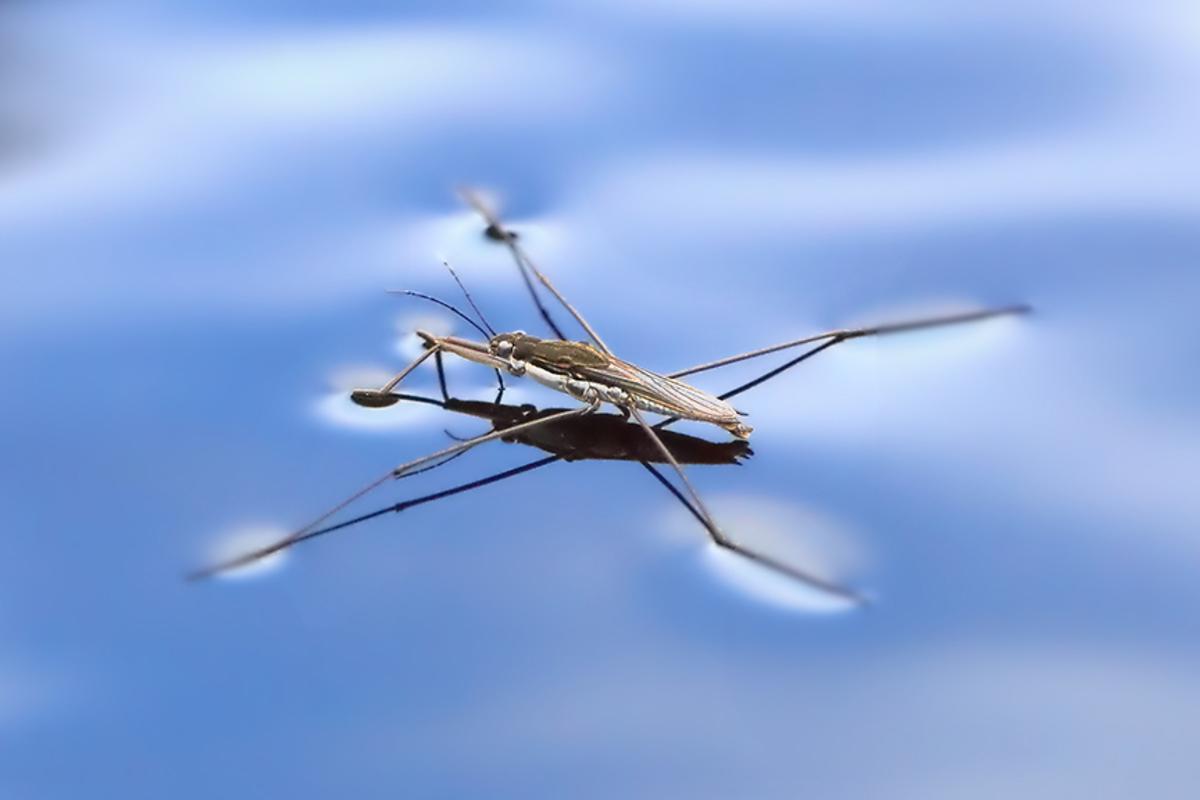One year after the creation of a ten-legged robot that could walk on water, a team led by Prof. Qinmin Pan has come up with a new and updated concept that, also inspired by the water strider, can accomplish the much more difficult task of jumping across the water surface without sinking.
Water striders avoid sinking by distributing their featherweight evenly over their elongated legs, and with feet covered in tiny hairs that increase buoyancy by trapping air around them. But at 11 grams (0.4 oz), Pan's microrobot is around 1,100 times heavier than your typical water strider, and the force needed to propel it into the air bears a much higher risk of breaking surface tension and sinking the robot straight to the bottom.

The researchers used computer simulations to study the forces exerted on the supporting legs, and concluded that superhydrophobic - i.e., hard to wet - materials are crucial in increasing the upward force that the supporting legs can provide for the jump. Building on previous research that had suggested using buoyant aerogel for next-gen water walking robots, Pan chose to employ porous, super water-repellant nickel foam to fabricate the robot's three supporting and two jumping legs. Similar to the water strider, the nickel foam creates small air pockets that improve buoyancy and all-around stability.
The robot's driving system includes a miniature direct-current motor and a reduction gear unit that allow it to leap more than 14 cm (5.5 inches) into the air and jump in strides of 35 cm (14 inches) - over twice its own length. Its increased mobility now means the microrobot can easily evade obstacles and be used to monitor water quality, or even perform spy or reconnaissance missions.
A paper describing the robot's jumping mechanics was published on the journal ACS Applied Materials & Interfaces.
Source: American Chemical Society





